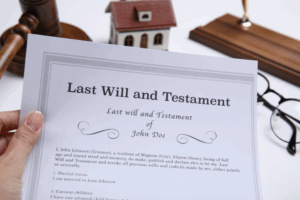When a person conveys false or misleading information about another person or entity, the injured party has a potential cause of action (lawsuit) against the offending individual. Regrettably, most people misunderstand this cause of action and the requirements for a successful lawsuit. An aggrieved person may feel slighted but the lawsuit to remedy the slight is more nuanced and complex than is commonly understood. It is important to note that neither libel or slander are illegal or crimes. Rather they are both potential civil actions or lawsuits.
When a person conveys false or misleading information, the exact lawsuit depends on how the information is conveyed. Slander and libel can be considered as two sides of the same coin. Slander is the spoken word whereas libel is the published word. Both are part of the broader category of defamation.
The law on the matter is necessarily complex as it needs to balance the needs for free expression and open dialogue against individual rights to live free of harm.
A local case from 1955 helps to illuminate the requirements for slander and libel. Around that time, a gentleman named Harvey Owens sued the Scott Publishing Company (which, at that time, owned the Tri-City Herald). The case is cited as Owens v. Scott Publishing Company, 46 Wn.2d 666, 284 P.2d 296 (1955). Harvey Owens was a member of the Kennewick School Board. During his tenure, the Tri-City Herald published an article that served as the basis for the Owens libel lawsuit. In the case, the facts show that the Herald ran an article that intimated that Owens was complicit in potentially improperly (and potentially illegally) utilizing or supplying surplus supplies intended for the school district. Owens alleged that he had been subject to a ruined reputation that exposed him to ridicule and deprivation of public confidence. He sued the Herald. Though both sides produced “considerable evidence” to support their side, the defendant was found liable for libel and damages were to be determined by a separate trial.
The basic framework is that Owens has alleged that a written (and published) derogatory story has harmed him and that it is factually inaccurate. This is the basis for the libel lawsuit. It is not enough to publish merel opinions (which generally cannot be proven to be true or false as they are simply opinions). Instead, the published information must be able to be proven true or false.
The Owens Court made several decisions based on this case that are helpful in understanding libel and slander as well.
First, the court confirmed that truth is a complete defense to libel. Id. That is, if the information conveyed is true then the affronted individual cannot maintain the lawsuit.
Second, the court recognized that a person may have a privilege to publish false and defamatory material but only if it is published “without malice, in good faith, and in an honest belief of the truth arrived at after a fair and impartial investigation or upon reasonable grounds for such belief.”
Third, quoting another legal source, the court affirmed another defense to libel called Fair Comment of Privileged Criticism. This defense to libel provides that “[c]riticism of so much of another’s activities as are matters of public concern is privileged if the criticism, although defamatory, (a) is upon a true or privileged statement of fact or upon facts otherwise known or available to the recipient as a member of the public; and (b) represents the actual opinion of the critic; and (c) is not made solely for the purpose of causing harm to the other.” The defendant in the Owens case used this legal defense and claimed its right to publish as it was a matter of public interest concerning which the public was entitled to be informed.
Once a defamed individual has shown that the injurious publication was false, the individual must then prove that the defamation caused injury – also called damages. This can come in many forms. Perhaps the libelous publication led to a lost job. Perhaps it led to a lost contract. Perhaps the injured party can show how he or she has been administratively harmed (e.g. demotion or loss of seniority). It is the proof of damages that lead to the injured party receiving compensation.
Consider the times that you have heard someone express that he or she has been defamed—either in publication or in the spoken word – and wants to sue. Perhaps the reader himself or herself has felt that way. Perhaps the reader’s business has been defamed. Although legal options may always be considered, the successful libel lawsuit is complex. Often it is more helpful to have a stellar public relations department (or individual acumen regarding the same) to skillfully respond to criticism in a most professional yet unambiguous manner.
390793-2
- Licensed, not practicing.
The opinions voiced in this material are for general information only and not intended to provide specific advice or recommendations for any individual or entity. This information is not intended to be a substitute for specific individualized tax or legal advice. We suggest that you discuss your specific situation with a qualified tax or legal advisor.
Securities offered through LPL Financial, member FINRA/SIPC. Investment advice offered through Cornerstone Wealth Strategies, Inc., a registered investment advisor and separate entity from LPL Financial.












